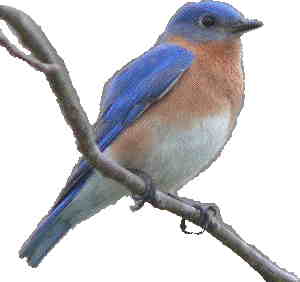 North American Birds
of Fields, Fencerows and Meadows
North American Birds
of Fields, Fencerows and Meadows
| Bobwhite quail | ||
| Killdeer | ||
| Red-Tailed Hawk | ||
| Screech Owl | ||
| Owls | ||
| Rufus - sided Towhee | American Robin | Wild Turkey |
| Purple Martin |
![]() Use a table to develop a facts sheet about these birds.
Use a table to develop a facts sheet about these birds.
Make a table in a word processing document. (Think ahead - how many rows and columns are needed?)
Enter eight (8) meadow bird species down the left side - one in each row.
Select bird species that can be found in your region/state.
Include your state bird as the 9th bird.
Label each column with a question/fact.
Enter the answer to the question in the appropriate cell. Complete sentence answers are not necessary.
Some birds stay in an area year round. Some nest in one region and have a different winter range.
Which birds winter in your area? Which nest in your area? Is it a year round resident?
Suggested column label: year round, breed, winter.
Birds nest in different places. They use many different materials to make their nests.
Describe the materials and location of each bird's nest.
Example: Puffin - seaweed/oceanside burrow
For each species: Do the male and female birds look the same or different?
What kind of bill or beak does the bird have?
What does this bird eat? seeds, flowers/leaves, insects, reptiles, birds, mammals (Diet)
Is the species nocturnal, diurnal or crepuscular?
Is the bird a predator or prey or both?
How does this bird depend on or need the field or meadow habitat?
Form some conclusions based on your data on these birds.
Explain how you have come to these conclusions.
Mystery Bird Challenge - ID that bird
Emergence - How does the "intelligence" of an ant colony or the stock market arise out of the simple actions of its members?
Fields, Meadows, and Hedgerows: Habitat / Mammals / Birds / Insect - Butterflies | Trees & Plants - Milkweed / Conclusion
Screech Owl Activity / Bats are our Buddies / Food Web Activity / Digital Science Journal / Life Cycles
School Habitat Garden Project / Ecology Vocabulary Exercise | EcoCommunity Status in your state | Fields, Meadows photos
Wildflowers info | Water and watershed studies | Plants and People
"People can often learn about things around them by just observing those things carefully, but sometimes they can learn more by doing something to the things and noting what happens. Describing things as accurately as possible is important in science because it enables people to compare their observations with those of others. Tools such as thermometers, magnifiers, rulers, or balances often give more information about things than can be obtained by just observing things without their help."1 Science NetLinks Benchmark 1- Nature of science - How science works |
![]() Save a tree - use a digital answer format - Highlight the text of the title, directions and questions. Copy the text. Paste it in a word processing document. Save the document in your folder. Answer on the word processing document in an easily read, contrasting color or font. (No yellow, avoid artistic fonts like: Symbols,
Save a tree - use a digital answer format - Highlight the text of the title, directions and questions. Copy the text. Paste it in a word processing document. Save the document in your folder. Answer on the word processing document in an easily read, contrasting color or font. (No yellow, avoid artistic fonts like: Symbols, ![]() ,
, ![]() , &
, & ![]() fonts). Save frequently as you work. Be sure to enter your name and the date in a document header. Make Your Own Printed answer sheet
fonts). Save frequently as you work. Be sure to enter your name and the date in a document header. Make Your Own Printed answer sheet
The goal of this web project is to inform people through research while employing higher order thinking skills. This study unit encourages the use of free Internet information resources. Activities develop writing, information literacy, technology and mathematics skills. The resources posted here may be freely adapted or modified to meet each student's unique skills or interests.